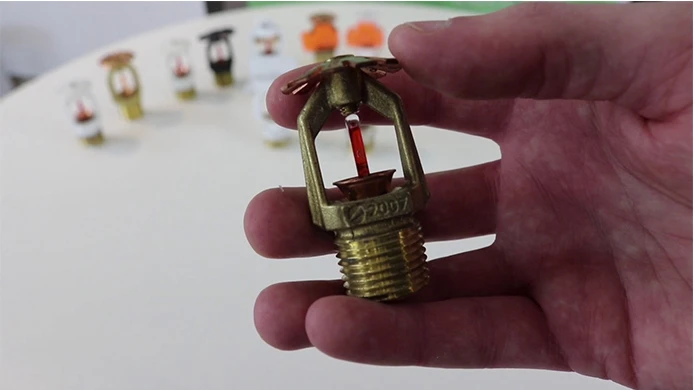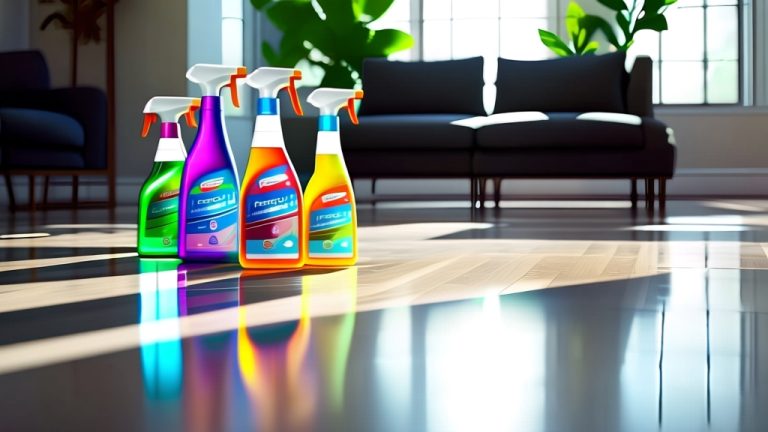5 Best Fire Sprinkler Heads for Home Safety in 2026
Fires can break out in any space, and when they do, it’s essential to have a plan to extinguish them quickly. Fire sprinkler heads are the first line of defense against fire. If these are blocked or covered, it could delay the ability to put out the fire.
The deflector on the best fire sprinkler heads helps prevent this. By spreading the water more effectively between space obstructions, these sprinkler heads are more effective even in inaccessible areas. But how do you know which fire sprinkler head is right for you?
This article lists the top 5 fire sprinkler heads, so you’ll find one that works for you. These are rust-resistant and require less water pressure, which is good if you live in a low-pressure area.
Can Fire Sprinkler Heads Be Reused?

The answer depends on the type of fire sprinkler. Some types, such as those that use a frangible glass bulb, cannot be reused and must be replaced after they have been activated.
Some types, such as fusible links, can be reset and reused. For your specific situation, it’s always best to consult certified fire protection professionals.
Can Fire Sprinkler Heads Be Painted?
Yes, you can paint over the sprinkler heads with high-temperature paint. This will help to protect the bulb from breaking at the wrong temperature.
Painting over the sprinkler head can also prevent water from being released. This will also help to keep the valve from dropping even if it breaks. Plus, it’ll give you time to get out and call the fire department.
Can Fire Sprinkler Heads Be Cleaned?

Of course, yes. While some people may think that cleaning fire sprinkler heads is a difficult or time-consuming task, the reality is that it can be quite simple. All you need is a garden hose and a soft cloth.
Use the hose to rinse off any dirt or debris from the sprinkler head. Then, use the cloth to wipe down the inside of the head, being careful not to damage any sensitive parts. When you’re done cleaning the head, make sure it’s still working by checking it.
Are All Fire Sprinkler Heads Interchangeable?
If you’ve ever had a sprinkler head break, you may have wondered if you can just replace it with any old head. The answer is no.
All fire sprinkler heads are not interchangeable. In order to maintain the proper flow rate and water pressure, you need to match the new head to the old one. Make sure your sprinkler system works properly in case of a fire by finding the right replacement head.
What Are the Parts of a Fire Sprinkler Head?
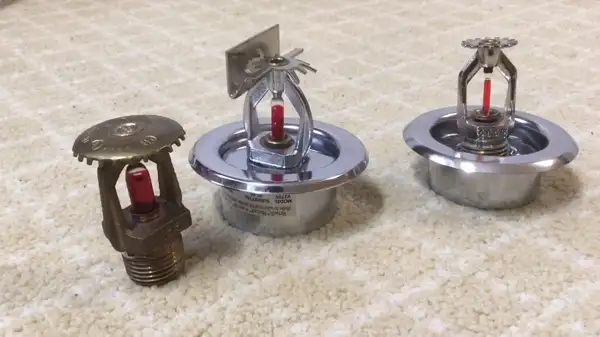
The fire sprinkler heads are the part of the fire extinguisher that is most visible. It is usually what is activated in a fire, releasing the water that puts out the fire.
But have you ever wondered what exactly is inside fire sprinklers? Below are some of the parts that make up a typical fire sprinkler head:
Sealing Assembly/Plug: This piece is located at the bottom of the fire sprinkler head, and its purpose is to keep water from entering and damaging the internals of the head.
Heat-sensitive Activator (glass bulb): The glass bulb sits on top of the sealing assembly/plug and contains a liquid that expands when heated. When the temperature gets high enough, the enlarging liquid breaks the glass bulb and allows water to flow into the deflector.
Deflector: The deflector forces water out of the fire sprinkler head in a downward spray pattern.
Frame: The frame holds all the other parts together and also provides a way to attach the head to piping.
Escutcheon and/or Cover: The escutcheon (a metal ring) or cover (a plastic cover) provides a finished look to the fire sprinkler head and also protects it from damage.
What Is the Flow Rate of a Fire Sprinkler Head?

One of the most important aspects of a fire sprinkler system is the flow rate of the sprinkler heads. This measures how much water is released by the sprinkler head per minute.
Flow rates from residential fire sprinklers range between 13 and 15 gallons per minute, while those from fire hoses range from 95 to 200 gallons per minute. The high pressure from a fire hose can quickly extinguish a fire, but it can also cause significant property damage.
A fire sprinkler system is designed to release moderate water over an extended period, which can help prevent property damage while effectively extinguishing a fire.
What Are the Different Types of Fire Sprinkler Heads?
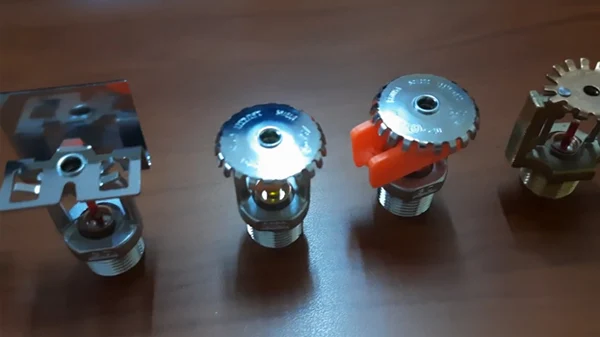
Heat is the main trigger for a sprinkler system, but it can also be set off by physical damage to the head, manual activation, or a remote sensor. Each type of fire sprinkler head serves a different purpose.
- Pendent heads hang from the ceiling and are the most common in residential occupancies.
- Upright heads are installed on walls and are used mostly in commercial applications.
- Sidewall sprinkler heads are placed flush with the wall and work well in storage areas with high shelving.
- Concealed heads are hidden inside the ceiling and used primarily in historic buildings.
When choosing fire sprinkler heads, it is important to take into account the specific needs of the building being protected. The following two sprinkler heads are the most common.
1. Vivona Pendent Fire Sprinkler Head
The Vivona pendent fire sprinkler head is mainly used in ceiling installation. When the room temperature rises to a certain point, the glass ball melts and breaks, and water sprays out from the nozzle to put out the fire.
This thread type is used primarily in US fire extinguishing systems, with a diameter of 1/2 inch NPT. Made of brass, it is durable and safe to use. It has a 68° action temperature and provides a quick response to a fire.
How Can This Product Help You?
In case of a fire emergency, this Vivona B07FPHRC67 sprinkler pump is a reliable item to have. The brass material ensures durability and safety, while the 68° action temperature provides a quick response to any fire.
Restaurants, hotels, shops, storage warehouses, commercial buildings, underground garages, and garment factories can use this pendant sprinkler head. It is an essential piece of equipment for any fire extinguishing system.
Good things:
- It can be quickly and easily installed
- Are relatively inexpensive
- Have a wide range of applications
- Less likely to cause water damage
- Perfect for commercial and industrial applications
Deficiencies:
- Requires professional installation
- It needs to be regularly maintained
2. Tomeco Automatic Fire Sprinkler Head
The Tomeco automatic fire sprinkler head is an excellent choice for an efficient and reliable fire extinguishing system. Made from copper alloy, this sprinkler is strong and corrosion-resistant, making it a great choice for long-term use.
It also features a beautiful polished chrome finish that will look great in any setting. This sprinkler head is also easy to install and comes with all the necessary hardware. And finally, they have a blue glass bulb, which makes them easy to identify.
How Can This Product Help You?
Fire sprinklers from Tomeco are essential to any fire suppression system. They help to detect fires and control or extinguish them through the use of water sprinklers.
Its copper alloy frames make it an ideal choice for restaurants, hotels, shops, and other commercial establishments. Their action temperature is 93° Celsius and is available in both upright and pendent sprinkler heads.
Good things:
- Reliable and durable
- Easy to install and maintain
- Effective fire protection
- A compact shape and a delicate look
- Widely used in various commercial buildings
Deficiencies:
- Lack of flexibility in design
What Size Are Fire Sprinkler Heads?
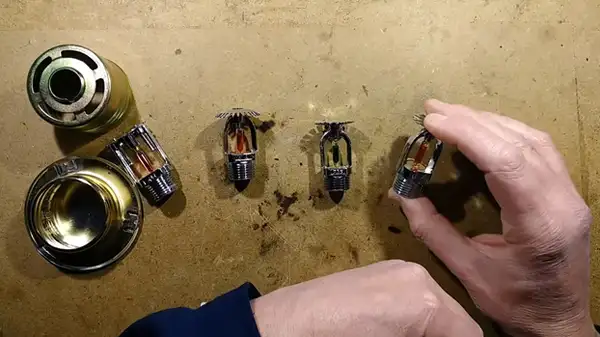
While all fire sprinklers are designed to achieve the same goal, they come in various sizes to meet the specific needs of different buildings. The most common sizes for fire sprinklers are 1/2″ (12.7 mm) and 3/4″ (19.3 mm).
1/2″ models are typically used in office buildings, hotels, and schools, while 3/4″ sprinklers are reserved for applications where larger quantities of water are necessary. The right size fire sprinkler is essential for effective fire response. You can check out this one:
➤ VIKING Upright Fire Sprinkler Heads
VIKING’s upright fire sprinkler heads are designed for both decorative and corrosive environment applications. A polyester or electroless nickel PTFE coating provides corrosion resistance in these environments.
The compact design of the upright fire sprinklers makes them easier to install in tight spaces. An innovative hinge prevents sprinkler components from lodging in the deflector. This allows the head to maintain a more uniform water distribution pattern, resulting in improved performance.
How Can This Product Help You?
Viking 1/2” NPT thread size sprinkler head’s upright design means they’re quick to respond in the event of a fire, and the various finishes and temperature ratings make them ideal for use in a wide range of environments.
Plus, they’re listed and approved for use in corrosive environments, so you can be sure your property is safe from fire no matter what. So, make sure your property is protected with Viking fire sprinkler heads today.
Good things:
- Special quick response operation
- Laser etched for fast model identification
- Various finishes and temperature ratings
- The XT1 spring and seal assembly
- ENT coatings for decorative or corrosive
Deficiencies:
- High quality makes it a little pricey
- Only available with a quick response time
What Is the Best Automatic Fire Sprinkler System?
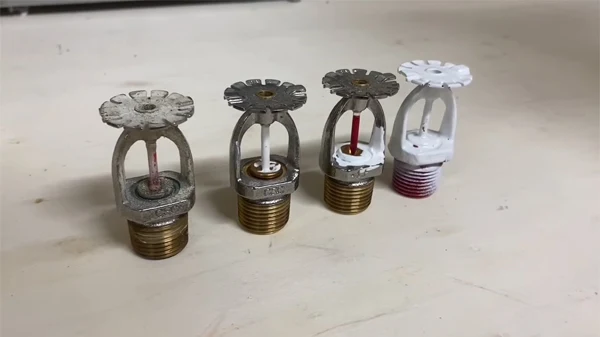
The type of system best for a given application depends on several factors, including the price and speed of installation, the need for wet or dry systems, and the system’s vulnerability to UV light.
Most home fire sprinklers are installed with CPVC piping because it’s low cost and quick to install. This makes the overall cost of the system much lower than that of steel or copper piping.
Even though CPVC systems have some limitations, such as the need for wet systems and limitations on the types of antifreeze that can be used, they are still effective at preventing house fires. You can see this fire sprinkler:
➤ TUNA 1/2 NPT Automatic Fire Sprinkler Head
The TUNA 1/2 NPT automatic fire sprinkler head is FM Approved and UL/CUL Listed. It has a temperature rating of 155°F (68°C) and a discharge coefficient of K=5.6(U.S) /80(Metric). The nominal orifice size is 1/2″(15mm), and the pressure maximum is 175psi (1.2Mpa).
Its hydrostatic test pressure is 500psig (3.4Mpa). This fire sprinkler head is suitable for use in automatic fire sprinkler systems. It is made with a frangible bulb that breaks under fire conditions to release water to extinguish or control the fire.
How Can This Product Help You?
The design of the TUNA NX025 fire sprinkler heads is quite simple, making them easy to install and maintain. Since they have a frangible glass bulb, they are pretty sensitive to heat and will automatically activate in the event of a fire.
They are also UL and CUL listed, which means they have been tested and approved by independent safety organizations. So you can be sure they effectively extinguish or control fires.
Good things:
- Underwriter Laboratories Listed
- Fire sprinkler heads with 5.6 K-factor nominally
- Dia5mm glass bulb with 155F/68C standard response
- Max working pressure is 175psig/1.2Mpa (12 bar)
- 100% hydrostatic test @ 500 psig (3.4MPa)
Deficiencies:
- It may not be suitable for areas at risk of freezing
What Is the Red Liquid in a Fire Sprinkler Head?
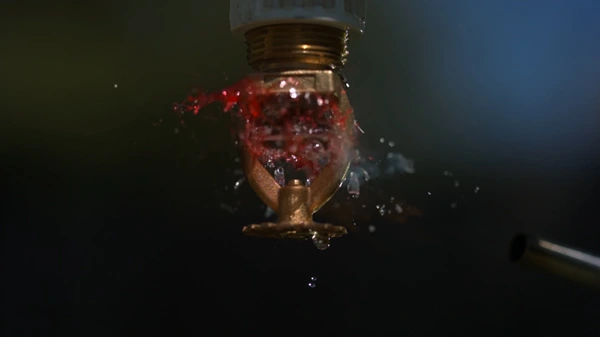
The red liquid inside a fire sprinkler head is typically alcohol-based. When the glass bulb inside the head reaches a certain temperature, usually around 155 degrees Celsius, the liquid inside will expand and cause the bulb to shatter.
This will release the water stored inside the head, which will help extinguish the fire like a concealed fire sprinkler head. So, the next time you see a red sprinkler head, remember that it’s there to help keep you safe in case of a fire.
✴ Bestopper Pendent Type Sprinkler Head
Bestopper sprinkler heads are made with brass material and have a thermal red glass bulb. They quickly respond by spraying water down to the ground. The parabolic shape of the water spray creates an 80% to 100% coverage area.
These sprinkler heads come with standard 3/4″ thread ends and are widely installed in indoor areas such as homes, factories, schools, and office buildings. They offer a 68° water spray down at 155°, making them an ideal option for many different types of spaces.
How Can This Product Help You?
The main benefit of this sprinkler is that it has a greater reach than other types, meaning it can cover a larger area. This can be helpful in areas with high fire risk, as it can help ensure that the fire is extinguished quickly.
Bestopper pendant-type sprinkler heads are also designed to resist damage, making them less susceptible to fire damage. This means that it can provide more excellent protection to buildings and their occupants.
Good things:
- Unique elbow and tee used for installation
- Sprinklers can be installed with a wrench
- Same model sprinkler replaceable
- It fits most standard fire sprinklers hoses
Deficiencies:
- These sprinklers can’t be coated or decorated
- Water distribution should have the filter
Comparison Table of Fire System Sprinkler Heads
| Product | Item Count | Glass Bulb Color | Material |
| Vivona B07FPHRC67 | 1 | Red | Brass |
| Tomeco Fire Sprinkler ( DN15) | 1 | Blue | Copper alloy |
| VIKING VK3001 | 1 | Red | Brass |
| TUNA NX025 | 2 | Red | Polyvinyl Chloride |
| Bestopper XPS-20-68*5 | 5 | Red | Brass |
How to Choose the Best Fire Sprinkler Heads?
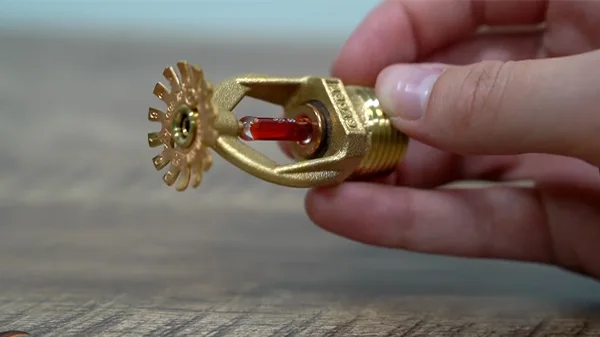
When it comes to choosing fire sprinkler heads, there are a few things you need to consider:
Material of Head
The fire sprinkler heads are generally made of brass or aluminum. Brass is more durable and corrosion-resistant, while aluminum is lighter and less expensive.
Some are made of copper, which is also corrosion-resistant. It is more expensive than brass and aluminum. But it is a better conductor of heat, so it responds quickly to fire.
Coverage Area
The coverage area is the area the sprinkler head can reach with water. Choose a head with a large coverage area so that it can extinguish the fire quickly. The larger the coverage area, the more expensive the head will be.
If you are not sure about the coverage area, you can ask the manufacturer or fire sprinkler installer. Their experts will be able to assist you in choosing the right head.
Type of Head
There are two types of fire sprinkler heads: standard and quick response. Standard heads have a delayed response time, while quick response heads respond quickly to fire.
The other two types are upright and pendants. Pendent heads, also called drop heads, are installed on the ceiling down, while upright heads are mounted on the ceiling up.
Temperature Rating
The temperature rating is the highest temperature the head can withstand before it activates. Glass bulbs have a higher temperature rating than fusible links.
Fusible links are made of metal and have a lower temperature rating. They are cheaper than glass bulbs but are not as reliable. You can determine the temp rating of a head by looking at the manufacturer’s datasheet.
Flow Rate
The flow rate is the amount of water the head can supply per minute. It is essential to choose a head with a high flow rate in order to extinguish the fire as quickly as possible..
If the water pressure is low, you will need a head with a higher flow rate. The flow rate is usually mentioned on the product’s label or in the manufacturer’s datasheet.
Thread Size
The thread size is the diameter of the thread at the end of the head. It is important to choose a head with the correct thread size so it can be installed properly.
The most common thread sizes are 3/4″, 1″, and 1-1/2″. While 3/4″ is the most common size, some heads come with a larger thread size so that they can be installed on thicker pipes. Check your pipe’s diameter to make sure you choose the right head.
Pressure Rating
The pressure rating is the maximum pressure the head can withstand. It can depend on the type of system you have.
If you have a standard gravity system, the head should be able to withstand at least 175 psi. If you have a pre-action pump, its head must withstand 200 psi. And if you have a dry pipe set up, the head should handle 250 psi.
Safety Certification
When choosing a fire sprinkler head, it is important to make sure it is certified by a reputable safety organization. The most common certifications are FM and UL/CUL.
FM certification means that the head has been tested and approved by Factory Mutual. UL/CUL means the head has passed Underwriters Laboratories.
These are just a few things to remember when choosing fire sprinkler heads. If you have any questions, ask the manufacturer or your fire sprinkler installer. They will be able to help you choose the right head for your needs.
How Does a Fire Sprinkler Head System Work?

Now that you know a little more about fire sprinkler heads let’s take a look at how they work.
A fire sprinkler system is made up of a series of interconnected pipes that run throughout the building. Each pipe is filled with water under pressure from the municipal water supply. There are also several heat-activated sprinkler heads located throughout the building.
This allows water to flow from the sprinkler head and onto the fire. 57°C/135°F Orange, 68°C/155°F Red, 79°C/174°F Yellow, 93°C/200°F Green, 141°C/286°F Blue, 182°C/360°F Purple are different colors used to identify different temperatures.
When a fire breaks out, the sprinkler head closest to the fire will begin to spray water onto the flames. This will help extinguish the fire and control it until the firefighters arrive.
The sprinkler system is monitored by a sensor located in the sprinkler riser room. If water begins flowing from one or more sprinkler heads, an alarm will go off at the fire panel, notifying the alarm company and the fire department.
Fire departments can then connect to the building’s exterior water supply to provide additional pressure and volume. This will help to extinguish the fire more quickly.
How to Stop a Fire Sprinkler Head?
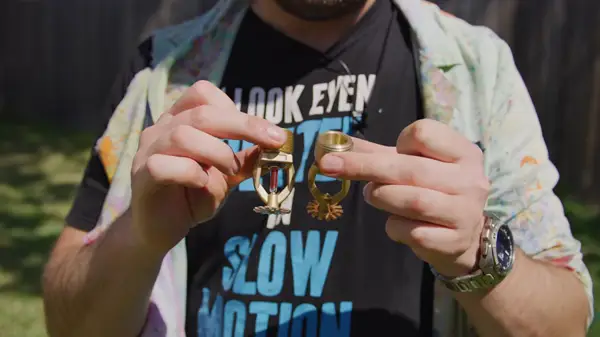
If you need to stop the flow of water from a fire sprinkler head, there are two methods you can use. First, you can purchase or make sprinkler stops. These are wedges of wood that fit into the head and block water flow.
Alternatively, you can unscrew the sprinkler head and attach fire sprinkler pipes. Both methods will get you wet, so be prepared. Shutoff valves for fire sprinklers are usually hidden in locked rooms or closets, making them difficult to reach.
How Often Should a Fire Sprinkler System Be Inspected?
Most people know that fire sprinkler systems are designed to activate in the event of fire automatically, but what they may not realize is that these systems require regular maintenance in order to function properly.
According to the National Fire Protection Association (NFPA), building owners should inspect sprinkler systems four times a year by experienced fire protection system experts. In addition to these annual inspections, the owner or occupant can conduct monthly and weekly inspections.
While this may seem like a lot of work, it’s important to remember that a working fire sprinkler system could mean the difference between life and death in the event of a fire.
How Long Are Fire Sprinkler Heads Good For?

Typically inspected and maintained fire sprinkler heads have a good life expectancy. That said, fire sprinklers have a limited lifespan and need to be replaced every five years. This may seem daunting, but ensuring that your fire sprinkler system is working correctly is essential.
Luckily, many companies specialize in fire sprinkler maintenance and replacement. By working with a reputable company, you can be sure that your fire sprinkler system will be up to code and can protect your property from fire.
Do Fire Sprinkler Heads Detect Smoke?
Surprisingly, the answer is no. Fire sprinkler heads are designed to activate when they reach a certain temperature. So if the smoke from a fire is hot enough, it could trigger the sprinkler head to discharge.
Only heat can tell the sprinkler head if smoke is present, not the smoke itself. Some sprinklers use smoke detectors to trigger water flooding them through solenoids.
But even in these cases, water still needs heat to discharge from the sprinkler head. So while smoke detectors can be an essential part of a fire safety system, they alone will not activate a fire sprinkler head.
Why Install a Fire Sprinkler System?
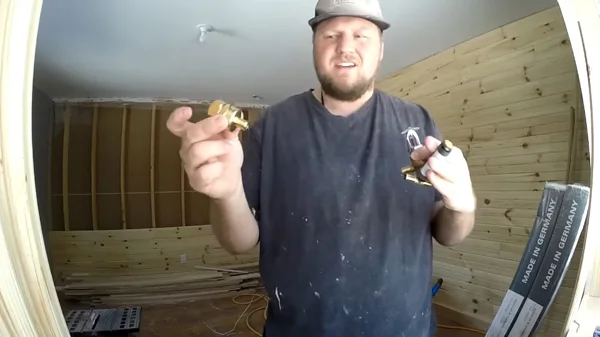
A fire sprinkler system is one of the essential safety equipment in a home. In the event of a fire, the sprinkler heads will activate and help to extinguish the flames. This can minimize property damage and, more importantly, help to save lives.
It is important to remember that fire sprinkler systems must be installed appropriately to be effective. It is therefore important to use the best fire sprinkler heads and have them installed by a professional.
When done correctly, a fire sprinkler system can provide peace of mind in knowing that your home is better protected against the threat of fire.

